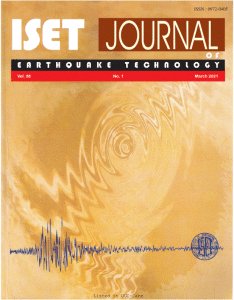Home > Issues & Journals
Numerical investigation for evaluation of seismic performance of sma-confined structural elements
Arpita Ghosh and Anjan Dutta
Paper No.: 560
|
Vol.: 58
|
No.: 1
|
March, 2021
|
pp. 1-18

Abstract
With the increased accentuation on both reliability and automation in the civil engineering field, the smart materials are quickly turning into an empowering innovation. One of these kinds is the shape memory alloy (SMA) with superior mechanical properties known as superelasticity (SE) and shape memory effect (SME), which enables them to recover permanent deformations when thermally activated. The SMAs can induce high recovery stresses owing to their SME property, which can be utilized to apply high and permanent confining pressures on concrete. Hence a numerical study was conducted to comprehend the performance of Fe-SMA-confined concrete cylinder and bridge pier specimens. Cylinder specimens for different design parameters were analyzed. Further bridge pier specimens were analyzed with the following layouts for retrofitting: externally bonded (EB), near-surface mounted (NSM), and hoop confinement. The particular focus of this study is on the aspects of finite element modeling and simulation of the behavior of SMA-confined concrete and show the feasibility of this technique in strengthening RC bridge columns. 3D non-linear finite element analysis were carried out in ABAQUS with concrete damaged plasticity model to predict and study the behavior of SMA-confined concrete cylinder under uniaxial compression and bridge piers under cyclic loading. This result presents the parametrical analyses on the effects of an increase in active confinement level and geometric parameters of cylinders and bridge pier. The results show that RC structures confined with Fe-SMA strips have significantly improved capacity when compared with those of the as-built structures.
Keywords: : rc structure, fe-sma confinement, numerical investigation, seismic performance
©2025. ISET. All Rights Reserved.